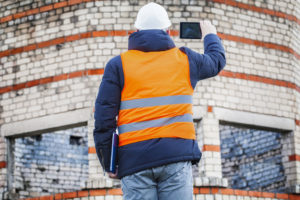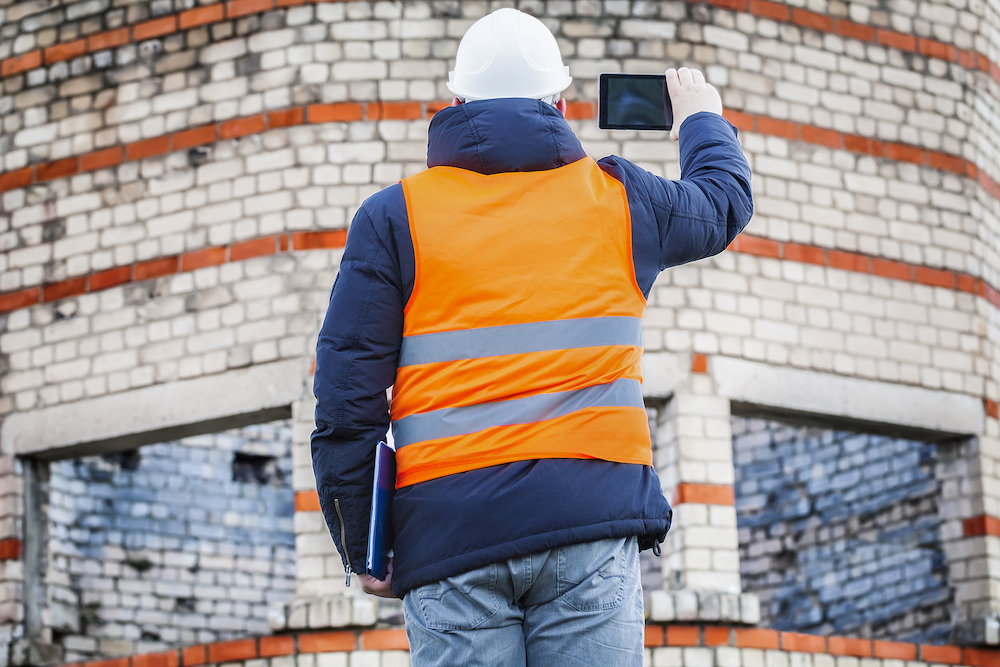
Sound documentation procedures are usually a good indication of a successful construction company. Creating a living record of the overall project can help increase efficiency, accountability, and helps avoid any costly issues that may arise. The problem is that written reports can’t always be a reliable source of information. By adding construction photo documentation to your practices, a company can ensure that its project information is as accurate as possible.
“I don’t trust words, I trust pictures”- Gilles Peress
Why is Construction Photo Documentation So Important?
Proper construction documentation is an essential aspect of the project manager’s responsibilities. Think of the amount of paperwork that passes through their hands on any given project. One reason the industry is so reliant on paperwork is the need to keep track of all the moving parts, all of the team members, and to increase visibility and communication. However, many times written records just don’t cut the mustard. They can be subjective, unclear, potentially fraudulent or just plain wrong.
Anyone who has been in the construction business long enough knows that changes happen, delays occur, and disputes inevitably arise. All of these issues cost time and money for everyone on the build. Having a clear, visual record of the project’s lifespan can go miles in resolving these unavoidable issues. Documentation is great, but providing photographic backup is an easy and definitive way to increase the accuracy of a project’s records.
Site Updates and Increased Communication
One significant benefit of construction photo documentation is the ability to keep customers informed. They can’t always conduct a physical site visit. Effectively updating stakeholders can reduce stress and improve business relations. Many times, communicating specific aspects of the construction process can become technical and confusing.
Providing pictures can help confirm events and describe construction activities to those that would otherwise not understand. This will reduce time waste and streamline the decision-making process. Photos can help identify any construction site conditions or potential hazards before they affect the overall schedule. When a client feels fully informed, payments will come faster.
Visible Job History, Timeline, and Progress Updates
Including progress photos with your documentation is a great way to track the status of the overall project. Daily progress reports, although incredibly useful, are sometimes overlooked or neglected by subs. Even if used, many times they’re rushed, altered, or even incomplete. Adding progress photos to daily reports can increase precision and clarity. And, when everyone’s on the same page, disputes occur less often.
Anytime the project encounters a change or reaches a milestone, snap a few “before and after” photos. Additionally, adding a time stamp to the pictures results in a clear visual timeline of the build. This can make it easy to track work, deliveries, and identify any potential problems that could affect the completion date.
A daily report isn’t the only construction document that can be improved by photos. They can also supplement change requests, closeout inspections, and punch lists. Imagine being able to provide a punch list coupled with pictures to show exactly needs to be remedied, and how it needs to be fixed. This can speed up the closeout process so everyone can get paid and move on to the next contract.
Liability Protection
This is where photos are particularly handy. Anytime a dispute arises, the amount of evidence and documentation a contractor can make or break your argument. This is by far the most important benefit of adding a camera to your toolbelt. Disputes can cause lengthy delays, and lawsuits can potentially break a company’s bank.
Most disputes in the construction industry revolve around issues of fact. This is the case with differing site conditions, delays, defective work, and any other potential claims. Solid factual evidence can quickly end a dispute. What better proof than actual pictures? If construction photo documentation can avoid the costs of a single lawsuit, then the time spent snapping a picture pays for itself ten-fold.
Methods of Photography
The value of having construction progress photos to supplement all your documents is a great way to increase efficiency. Even if it’s as simple as taking a Polaroid and paperclipping it to your files. Depending on the complexity of the project or the size of the construction firm, camera options can range from essentially free to a few hundred bucks. Here are a few options.
Phone/Tablet
Clearly, the cheapest and easiest option is already in your pocket. Most phones nowadays happen to have great cameras. Depending on the amount of detail you want, this is a simple way to bolster your documentation. Also, there are many options to automatically upload the pictures onto online storage sites or cloud-based services.
Drones
The use of drones in the construction industry is on a steady rise, and the price has dropped. The maneuverability and access to hard to reach spaces can prove invaluable. Imagine being able to survey an entire site through aerial photography in a short period of time. You can gather data on site conditions, and conduct inspections of inaccessible places.
3D/360 Cameras
This is the super-techy solution. Technology and the construction industry are finally starting to cross paths, primarily through the use of CAD and BIM technologies. A digital recreation of the project is already saving companies time and money, but the addition of 3D pictures can result in much more detail than you already have access to. Obviously, this is an expensive option, and should probably be used only on big-budget or highly complex projects. But technology develops quickly, and the price will eventually drop (like drones have).
Bottom Line
Proper record keeping is invaluable to the successful completion of a project. But written records can only tell so much. The simple task of adding pictures to your files provides clarity of the day-to-day events and helps keep everyone informed. Most importantly, if your company is facing a claim or dispute, referencing a photo can quickly squash the disagreement (one way or another). At the end of the day, it doesn’t matter what happens on the job site as much as it matters what has been documented.
Additional Resources
- Construction Document Mangement Presents Unique Challenges
- Construction Schedule | Tools for Completing Your Project On Time


